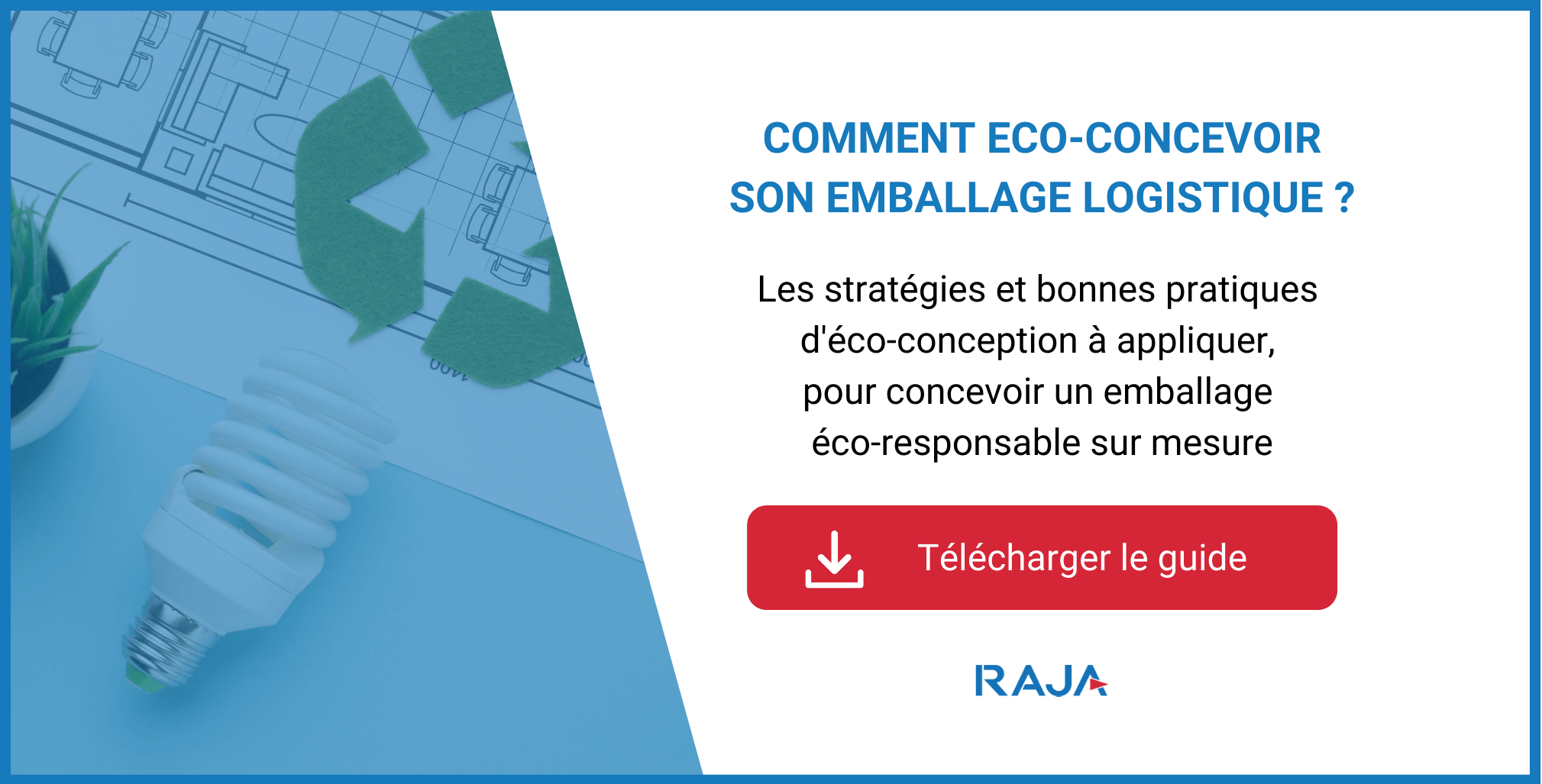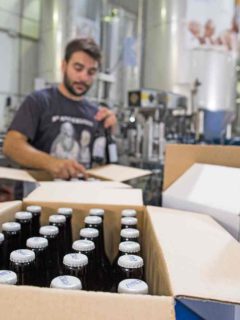Whether you work in retail or e-commerce, BtoC or BtoB, every year brings its share of new challenges in terms of logistics.
The start of 2024 is no exception to the rule: new regulations in force or to come, and increased competition and consumer expectations, mean you need to be ingenious if you want to boost your growth.
The good news is that packaging can help you do just that!
Take inspiration from the following six packaging trends for 2024, and revise your packaging strategy to boost your competitiveness and your brand image.
Wooden packaging: a key method for food in 2024
When we think of wooden packaging, we often think of the wooden crate – an essential type of packaging for anyone wanting to export their goods, or transport dangerous products.
However, the packaging trend for 2024 will be wooden food packaging. This almost rustic packaging can be used to pack cheese, dried fruit or ready meals.
The chairwoman of the Lacroix Group explained this craze for wooden packaging in Les Echos on 18 December 2023: “Wooden packaging is the most ecological, the one that requires the least processing and the one that has the best carbon footprint“.
She points out that the market for wooden trays is growing fast. Ten years ago, Lacroix sold 40 million units a year – now the figure is 80 million units a year.
Note also that other types of wooden packaging are also part of this trend, such as :
- Moulded wooden palletsmade from recycled, moulded and compressed wood waste
- Wooden cutleryideal for putting an end to disposable plastic cutlery
- Wooden baking mouldswhich easily replace paper baking trays
Reusable packaging: a must-have for 2024
As you can see, in 2024 more than ever, ecology is at the heart of packaging trends. And if there’s one type of packaging that goes hand in hand with eco-responsibility, it’s reusable packaging! By this term, we mean any type of packaging that can be reused by the consumer or by the company using it for internal processes.
Among the reusable packaging products of the moment, we are seeing more and more :
- Round-trip packaging for e-commerce. These are designed to withstand several shipments (the initial shipment, as well as customer returns), and come in crate, box and pouch formats to suit all logistical needs.
- Glass food packaging, which caterers are now using as an alternative to plastic packaging.
- Plastic bins for storage, to be used instead of cardboard boxes. Plastic stacking bins and shuttle bins can be reused many times, and provide good protection for goods during storage.
- Reusable plastic pallets.
Want to dig deeper into this trend? Visit our article on reusable packaging.
The plastic packaging trend… but in a different way
Are you surprised by this packaging trend in 2024? To understand it, let’s start by comparing the environmental impact of cardboard and plastic.
Cardboard has a carbon footprint of 964 kilograms per tonne of CO2 equivalent, compared with around 1,870 kilograms of CO2 equivalent per tonne produced by plastic. But in terms of water consumption to produce cardboard, 60 to 400 litres of water are needed for 1 kg of cardboard, compared with 1 to 2 litres of water for 1 kg of plastic.
It is therefore difficult to determine, from a holistic point of view, which material has the greatest ecological impact between these two key packaging materials. With this in mind, plastic remains a packaging trend for 2024… but not just any plastic!
Plastic can be seen as an ecological alternative, if you opt for :
- Reusable plastic packaging – as you’ve already seen in the previous trend.
- Packaging made from bio-sourced plastic. These types of plastic come from renewable materials, and are created from sugar cane, beet, corn or potato starch, for example.
- Recyclable plastic packaging. Not all plastics can be recycled – however, all those belonging to the polyethylene terephthalate (PET), high-density polyethylene (HDPE) and polypropylene (PP) families can be recycled through current sorting systems.
Not to mention the fact that certain sectors of activity are finding it hard to do without plastic for packaging their products… So you need to find the right packaging to protect your goods and protect the environment at the same time.
Augmented packaging: a differentiating experience for your customers
Also known as connected packaging, augmented packaging involves integrating a QR Code or NFC chip into the packaging itself to create an enhanced experience for the consumer who scans it.
For example, you could consider :
- Leading your customer to a competition in which they can take part, or to a discount code to be applied to their next purchase.
- Guiding your customer to a web page that gives them more details about how the product has been designed
- Include a link on the packaging to a tutorial video showing how to use the product
This type of personalised packaging strengthens the bond between the consumer and the brand, and therefore enhances the customer experience, which ultimately sets the brand apart from the competition.
Intrigued by this trend? Read our article on connected packaging.
Deposits: a packaging trend to look forward to in 2024?
You’ve undoubtedly heard of the AGEC law, the law on the fight against waste and the circular economy. In January 2023, this law provided for consultation on the introduction of deposit systems for recycling or reusing different types of packaging.
At the beginning of 2024, this consultation reached its conclusions: France is well behind its targets for the environmentally-friendly management of packaging. Indeed, at the current rate of progress, the packaging recycling targets by material for 2023 will not be met. According to the latest figures, the recycling rate for cardboard will need to increase by 20 points, for aluminium by 25 points and for plastics by 30 points in 7 years!
To alleviate this problem, the experts recommend introducing a deposit for the re-use of glass packaging. However, they come to different conclusions when it comes to recycling deposits (particularly for plastic bottles): according to the experts, this solution could have adverse effects on the environment, and should therefore be discarded.
It remains to be seen how these conclusions will be implemented in France as the year progresses.
Eco-design: 100% eco-friendly personalised packaging
With legislation on packaging increasingly aimed at controlling its environmental impact, and consumers paying more and more attention to it, companies are turning more and more to the tailor-made creation of environmentally-friendly packaging. This is known as eco-design.
While eco-design encompasses a large number of packaging manufacturing techniques, it also involves ensuring that :
- Reducing the use of raw materials, by implementing “right packaging”, which protects the product without over-packaging.
- Using renewable, recyclable or reusable raw materials, to monitor the end-of-life of the packaging. Note that this concerns both the packaging method itself (i.e. the container) and its third-party components (inks used to print on the packaging, adhesives used to close the packaging, etc.).
- Limit the use of energy resources when creating the packaging.
Eco-designed packaging can be a real plus for your brand image, enabling you to significantly reduce your environmental impact. To find out more, discover 3 eco-design packaging techniques to consider.
So, which of these 2024 packaging trends will you use to stand out from the crowd this year?















